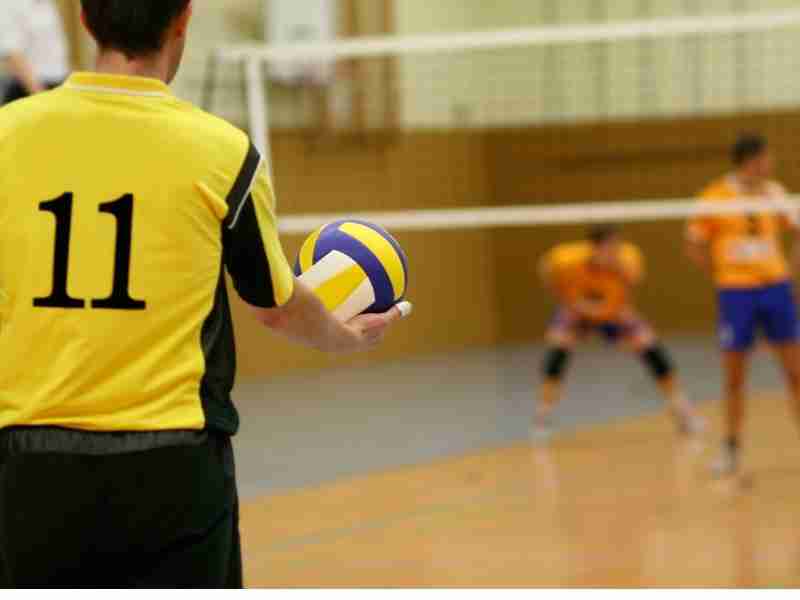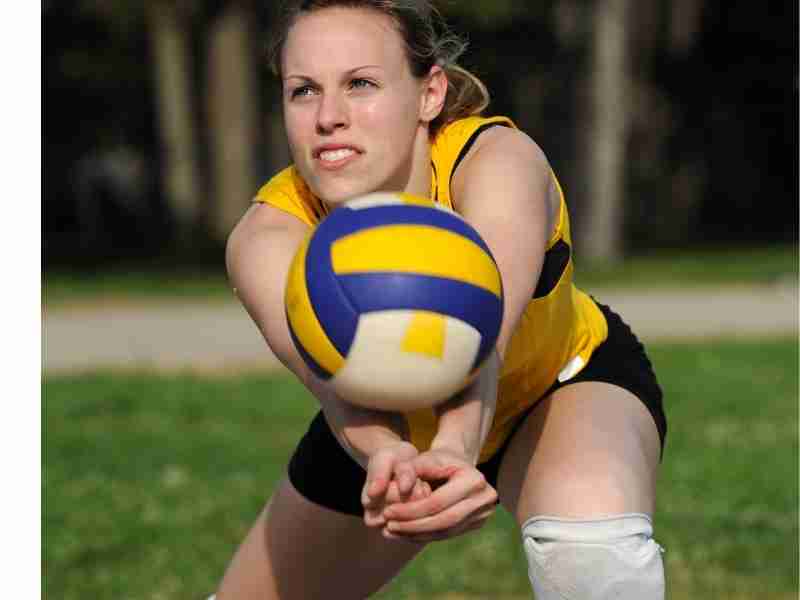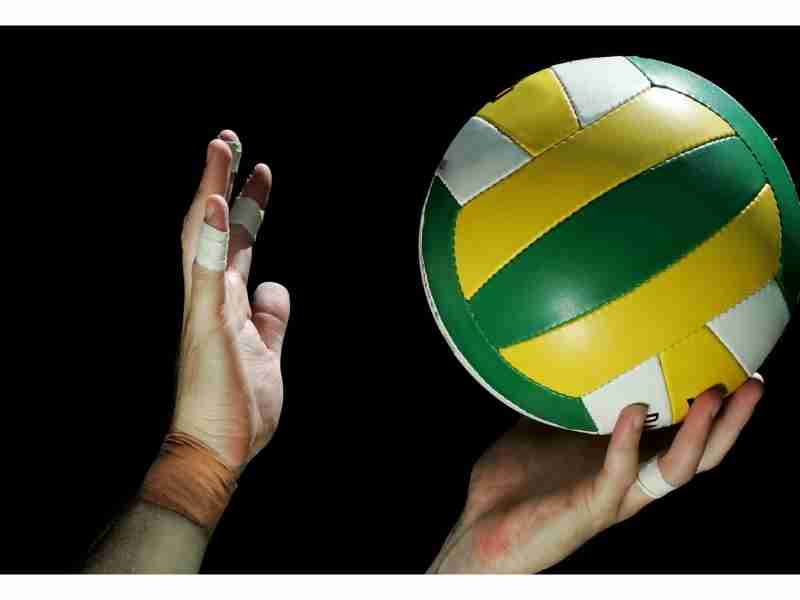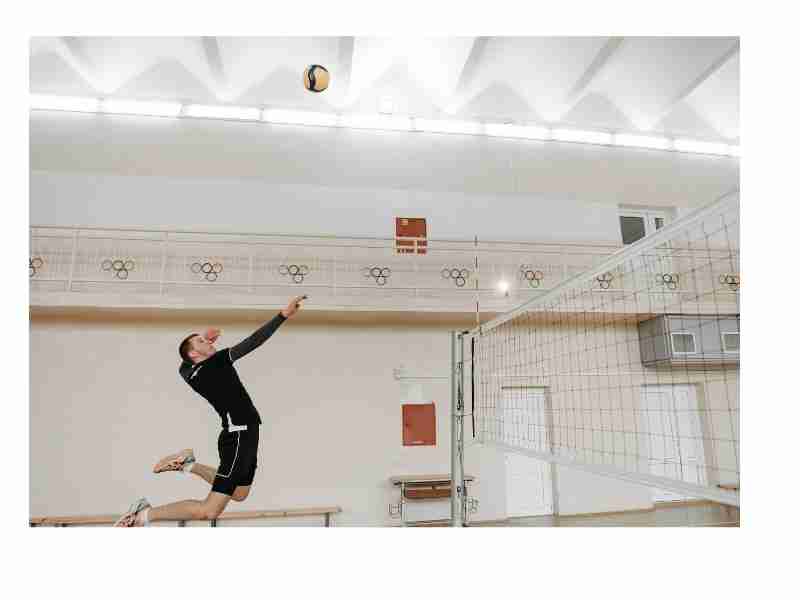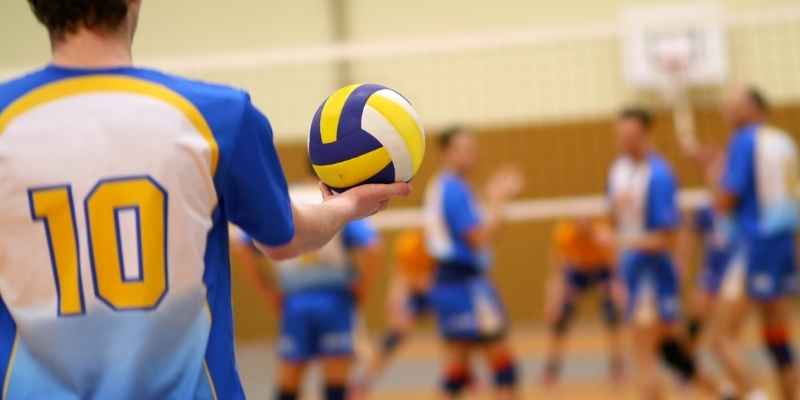
Do you know how the volleyball rotation system works? If not, don’t worry; you’re not alone. Volleyball is a complicated sport with a lot of rules and regulations.
As any volleyball coach knows, choosing the correct rotation is critical to success on the court. The most popular rotations are the 6-2 and the 5-1. The 6-2 rotation is ideal for teams with strong hitters, as it allows for more offensive possibilities.
The 5-1 rotation, on the other hand, is better suited to teams with strong defensive players. It can be more difficult to score points using this rotation, but it’s often easier to prevent opponents from scoring.
This blog post will break down the volleyball rotation system’s basics so everyone can understand it.
Volleyball Rotation Rules
Maintaining proper court positioning is one of the most critical aspects of the game. Players must line up in their assigned positions before each point and remain there until the ball is served.
If a player is absent from their position, the opposing team wins the point automatically. Players can move around the court once the ball has been served. It is, however, critical to communicate with your teammates to ensure everyone is on the same page.
Players must be mindful of where they are on the court to best support their teammates and set up for attacks.
Each team is divided into two rows of three players. After each point is scored, these rows must alternate between the front and back rows, with the players switching positions within the row. The spot or space you stand on the court is flexible, and formations can be stretched to give players a strategic advantage.
You only need to be in front of, behind, and to the right or left of your row’s players; you don’t need to stand in a straight line. If you follow these rules, you’ll help your team’s court position.
The referee must be able to tell if you are slightly closer or further away from the net or the given side than the player next to you for you to go around the court in the correct order.
Players are frequently squished up against the net and even in the corner. This is acceptable as long as they are in the correct rotational order.
You can stand right next to each other, and some players will hold their teammate’s hands if they plan to switch places quickly, pulling each other in the opposite direction.
You can be in the correct rotational position if one of your feet is further in the right direction than the other player.
Mechanics of Rotation System
The mechanics of Volleyball’s rotation system can help players make the most of their time on the court. Each team is limited to six players. These six players must rotate around the court, spending time in each of the three areas: the front row, the back row, and the serving position.
The rotation begins when a player in the back row moves to the front row and then continues clockwise around the court. The main reason for this rotation is to ensure that each player has a fair chance to attack, defend, and serve.
How the rotation system works, players can position themselves strategically, and better use their time on the court.
Base rotation is a crucial part of the game. It is made up of numbers one through three in the front row, one facing the net on the right, two in the middle, and three on the left. This formation allows all players to be evenly spaced out and have a clear view of the court.
Additionally, it provides each player with an opportunity to attack or defend the net. Base rotation is an essential strategy that can help teams win matches.
The base rotation is the systematic movement of players around the court. Each player is assigned a number, and this number corresponds to a specific position on the court. For example, in the first rotation, four is on the back-left, five is in the back-middle, and six (setter) is on the back-right. As the rotation progresses, the numerical positions rotate clockwise.
In the last rotation, the setter is in the right front spot, and number one is in the middle front spot.
The rotation has to keep going in the same order, with each position in its proper place. However, players can change the space if they don’t move into another spot where they can turn.
This can be used to create an advantage for the team by opening up new attacking or defensive possibilities. For example, a player may move to the front of the court to receive a serve, then quickly rotate back into their original position. Doing so creates a hole in the defense that their teammates can exploit.
Similarly, a player may remain in the backcourt to block shots rather than rotate up to the front. While this goes against the traditional rotation, it can effectively stop an opposing team’s offense.
While overlapping the player is technically against the rules, it is not uncommon for players to do so accidentally. As such, referees often use discretion when deciding whether or not to penalize a player.
Rotation One
- First, rotate the base set to position your setter.
- The setter pushes to the right of the net, avoiding player 1.
- Since the setter moved up, player 3 now serves to help four and five.
- When the serve is received, the setter assumes its natural position. Others must hit and cover simultaneously.
- The setter can’t cross before player 1 or closer to the middle than player 5.
Rotation Two
- The second rotation allows the setter to start near the preferred placement.
- The setter is in the middle-back position after moving clockwise. Before the serve-receive, the setter lifts player 3.
- Four will help five and one with serve-receive.
- When player 3 receives the serve, the setter is ready to hit.
- This rotation has overlap issues, especially in the back row.
- The setter must avoid being crossed over by player 5 or 1.
Rotation Three
- The third rotation is opposite the first.
- The setter starts in the back left.
- Setter 4 pulls to the left and sets 5 to the net. This helps them get outside quickly.
- The setter is far from their ideal position.
- The setter must sprint to the right after the ball is served.
- Right-side player 3 will help with serve reception.
- Overlapping is only a concern when the setter leaves early or Player 1 overlaps for serve receive.
Rotation Four
- In rotation four, the setter comes forward.
- Reducing overlap simplifies everyone’s life.
- The front row players can be close to each other to help the setter reach their spots, but they must remain in numerical order.
- Once the setter is in the front row, players can move freely.
- This allows hitters to “switch” positions before offensive plays.
Rotation Five
- Rotation five is ideal because the setter isn’t in the front middle.
- This is an adaptable playset.
- The setter can direct passes closer to the middle to eliminate a middle attack and free up two outside hitters.
- One of the outside players can attack from the middle.
Rotation Six
- The sixth rotation is last before restarting.
- The setter can easily set from the front-right spot in the front row.
- As the setter calls, front-left and front-middle hitters can hit from any position.
- A setter often places a back-row player behind the 10-foot line (3m line). This allows an off-the-net attack on the opponent’s court.
The 5-1 rotation
The 5-1 rotation is one of the most popular rotations used in Volleyball. As the name suggests, it involves five-hitter players rotating around one (setter) player who stays in the same position. This player is typically the setter responsible for distributing the ball to their teammates.
The 5-1 rotation allows for a more balanced offense, as all positions are filled at all times. It also gives the setter more opportunities to distribute the ball, leading to more scoring opportunities.
However, it can be more challenging to defend against, as opponents will often have more attacking options. Nevertheless, the 5-1 rotation is a popular choice for many teams and can be a great way to create a balanced and effective offense.
The libero and defensive specialists are essential additions to any volleyball team. While they may not get as much glory as the hitters or blockers, their role is crucial to the team’s success. In serve-receive, for example, the libero and defensive specialist help organize the players and avoid overlap. This is critical in keeping the team in proper rotation and ensuring that those with good passing skills are in a position to make the first pass.
The team can stay organized and reduce errors by rehearsing these drills well. As a result, the libero and defensive specialist play a vital role in any volleyball team’s success.
So, familiarity with each player’s strong and weak points is critical. Until then, you won’t be in the best position to decide who should be in which roles.
Advantages
- A one-setter rotation provides consistency.
- Each hitter will learn the setter’s habits.
- A setter who sets the whole game can better understand each hitter’s strengths. Each hitter will develop an automatic rhythm.
- This would be harder with two setters of different strengths.
- In the 5-1 rotation, a setter doesn’t sub.
- You can substitute a defensive specialist when an opposite hitter enters the back row.
- The setter should enter the front row in the 5-1 volleyball rotation.
- The middle blocker can run plays behind a 5-1 setter in the front row.
Disadvantages
- 5-1 has one setter.
- If the setter makes the first pass, someone else must set.
- When the libero plays set, an offense can struggle. The libero can’t set the middle, limiting offensive options.
Basics of the 5-1 Volleyball Rotation
1. The setter stands to the right of the middle, about two feet from the net, after the first pass.
The setter’s pass should always be aimed at the same spot.
A consistent starting point allows consistency and predictability, even if the setter can’t get into the right position every time due to a bad pass or another factor.
2. Players should go right to their spots when the opponent serves.
Before or as the ball crosses the goal line is ideal.
While hitters prepare, setters should move to their right.
This smooths the transition to offense.
3. Everyone Must Follow The Setter’s Lead.
The setter controls offense, hitting strategy, and game-plan variables.
They must be instructed during and between games as the team’s primary source of information.
4. When it’s your turn to serve, your players must be in the best position to make plays.
A 5-1 serve to receive is to “protect the setter” from passing first.
This allows the setter to stay in the game and set rather than be “out” and replaced by another player.
Each rotation positions the setter safely and moves others to cover serves.
6-2 Volleyball Rotation
Volleyball’s second most popular coaching approach is the 6-2 rotation. There are always six players on the court, as the name would imply.
Two players are hitters and setters who alternate between the front and back rows.
When one is a setter in the back row, the other is an opposite hitter in the front row.
They remain opposite as they rotate through the positions, so one is always in the back. Because back row players cannot hit from in front of the 10-foot line, playing your setter from the back row provides you with more offensive options.
You’ll need two excellent setters who can also hit. They must also be effective blockers, as they will be playing the hitter’s position for half of every game.
Volleyball is a sport in which split-second decisions and quick reflexes are required. As a result, many coaches prefer a 6-2 rotation, which allows all six players on the court to participate in every play.
The main benefit of this rotation is that it gives each player more chances to affect the game’s outcome. There are more options for setting up plays and attacking the opposition’s defense when there are six players on the field. The 6-2 rotation also offers more flexibility when substituting players.
FAQs
When Do Players Rotate In Volleyball?
In Volleyball, after each side out, there is a rotation. The receiving team earns the right to serve by winning a rally. So, if you are on the receiving team and win the point, or if the serving team makes an unforced error, the players must rotate.
As the game progresses, you might find that you need to adjust your position to give your team the best chance of winning.
However, the fundamental rotation will never change. The next time you play Volleyball, pay attention to the rotation to make sure you’re in the appropriate spot for when the point is over.
Rotating also prevents any one player from getting too tired or overwhelmed. As a result, player rotation is an integral part of the volleyball game and helps keep players both fresh and evenly matched.
Does The Server Have A Rotational Position?
Once the serve is in play, the server can enter the court and follow the same rules as any other back-row player. Previously, the server was required to stand in the upper right corner of the finish line.
This is far more equitable, as left-handed and right-handed players would have unequal difficulties controlling the ball’s placement around the court from the back right corner. As a result, when serving, servers can now stand anywhere behind the service line, giving them more control over where the ball is placed.
Does The Libero Rotate In Volleyball?
The libero alternates positions with the other players. She has unlimited back-row substitutions but must leave the court for one point unless she is serving.
The libero enters the court in position one (to serve or replace the server), rotates through positions six and five, and exits in position four on the front row. She is unable to play first.
What Is The Attack Line In Volleyball?
In Volleyball, the attack line is three meters from the back wall. It is also referred to as the “three-meter line” or the “net.” This line determines whether a player is attacking the ball in front of or behind the opponent’s block.
A player behind this line is considered to be in front of the block and is not permitted to attack the ball. If a player is in front of this line, they are considered behind the block and may attack the ball. The attack line aims to create fair and equitable competition between the blocker and the attacker.
The attack line is 10 feet (3 meters) long. It’s similar to the internet. Front-row players can attack from anywhere on the court, but back-row players are not allowed to attack before the attack line. Back-row players may hit, but they must leave the ground or make contact with the ball from behind the 10-foot line.
Bottom Line
The volleyball rotation system has numerous rules and advantages. The 5-1 rotation is a more defensive system that can be used when your team has good passers, and your opponent has a strong hitter. The 6-2 rotation is an offensive system that should be used when weaker passers and your opponent has a weak hitter. Read the above in detail.



